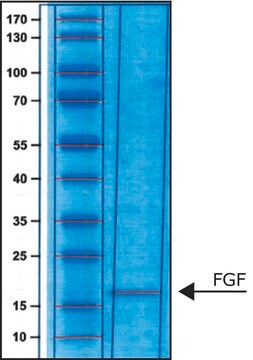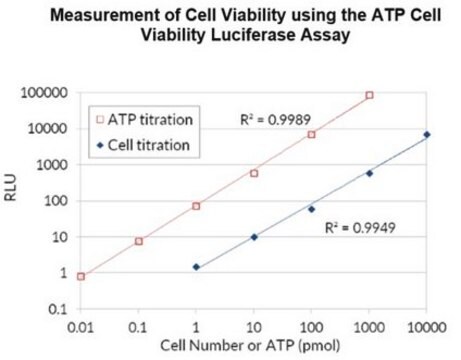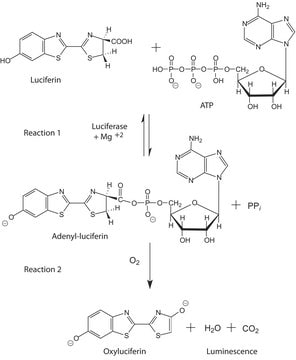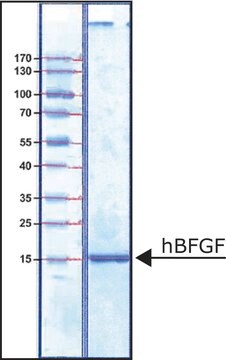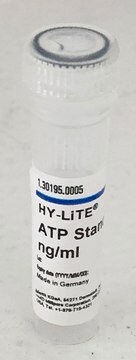Alle Fotos(1)
Wichtige Dokumente
FLAA
Adenosin-5′-triphosphat (ATP) Biolumineszenz-Assaykit
for ATP quantitation
Synonym(e):
ATP Bioluminescence Assay, ATP Determination Kit, Luminescent ATP Detection kit
Anmeldenzur Ansicht organisationsspezifischer und vertraglich vereinbarter Preise
Alle Fotos(1)
About This Item
Empfohlene Produkte
Qualitätsniveau
Lagertemp.
−20°C
Allgemeine Beschreibung
Das Adenosin-5′-triphosphat-Bioluminiszenz-Assay-Kit (ATP-Bioluminiszenz-Assay-Kit) kann für die quantitative biolumineszente Bestimmung von ATP in Proben verwendet werden. Wenn die Luciferase die Oxidation von D-Luciferin katalysiert, wird ATP verbraucht und Licht emittiert. Wenn ATP das limitierende Reagenz ist, ist das emittierte Licht proportional zu dem in der Probe vorhandenen ATP.
Anwendung
Das Adenosin-5′-triphosphat-Bioluminiszenz-Assay-Kit (ATP-Bioluminiszenz-Assay-Kit) wird auch für die Quantifizierung von ATP in 3D-Matrizen von menschlichen Neuronen, Leberzellen mit Ischämie, verschiedenen Bakterienkulturen und Lysosomen verwendet.
Nur Kit-Komponenten
Produkt-Nr.
Beschreibung
- FL-AAB Dilution buffer 1 mL/vial
- FL-AAM Assay mix 1 mL/vial
- FL-AAS ATP standard 1 mL/vial
Signalwort
Danger
H-Sätze
P-Sätze
Gefahreneinstufungen
Eye Dam. 1
Lagerklassenschlüssel
10 - Combustible liquids
WGK
WGK 3
Flammpunkt (°F)
Not applicable
Flammpunkt (°C)
Not applicable
Hier finden Sie alle aktuellen Versionen:
Besitzen Sie dieses Produkt bereits?
In der Dokumentenbibliothek finden Sie die Dokumentation zu den Produkten, die Sie kürzlich erworben haben.
Kunden haben sich ebenfalls angesehen
Hynek Mergental et al.
Liver transplantation : official publication of the American Association for the Study of Liver Diseases and the International Liver Transplantation Society, 24(10), 1453-1469 (2018-10-26)
Increased use of high-risk allografts is critical to meet the demand for liver transplantation. We aimed to identify criteria predicting viability of organs, currently declined for clinical transplantation, using functional assessment during normothermic machine perfusion (NMP). Twelve discarded human livers
F Chen et al.
Journal of clinical microbiology, 32(11), 2791-2800 (1994-11-01)
A bioluminescent assay which employs the luciferin-luciferase ATP-dependent reaction was used to evaluate the viability of populations of Pneumocystis carinii derived from infected rat lungs. Contamination with host cells was reduced by a purification method which involved a combination of
Marco A Tavares et al.
Environmental toxicology and pharmacology, 40(1), 206-214 (2015-07-06)
Fipronil is an insecticide extensively used to control pests in crops and animals. There are relates of poisoning due to exposure of fipronil in mammals and the liver has been suggested as potential target. In this study, we evaluated the
John F C Steele et al.
PloS one, 14(8), e0221226-e0221226 (2019-08-29)
Plant NLRs are modular immune receptors that trigger rapid cell death in response to attempted infection by pathogens. A highly conserved nucleotide-binding domain shared with APAF-1, various R-proteins and CED-4 (NB-ARC domain) is proposed to act as a molecular switch
Daniel Nicodemo et al.
Journal of economic entomology, 111(3), 1369-1375 (2018-03-14)
Silkworm cocoon production has been reduced due to a number of problems other than those inherent in sericulture, such as diseases, malnutrition, and inappropriate management. The use of pesticides in areas surrounding mulberry fields can contaminate these plants and consequently
Unser Team von Wissenschaftlern verfügt über Erfahrung in allen Forschungsbereichen einschließlich Life Science, Materialwissenschaften, chemischer Synthese, Chromatographie, Analytik und vielen mehr..
Setzen Sie sich mit dem technischen Dienst in Verbindung.


